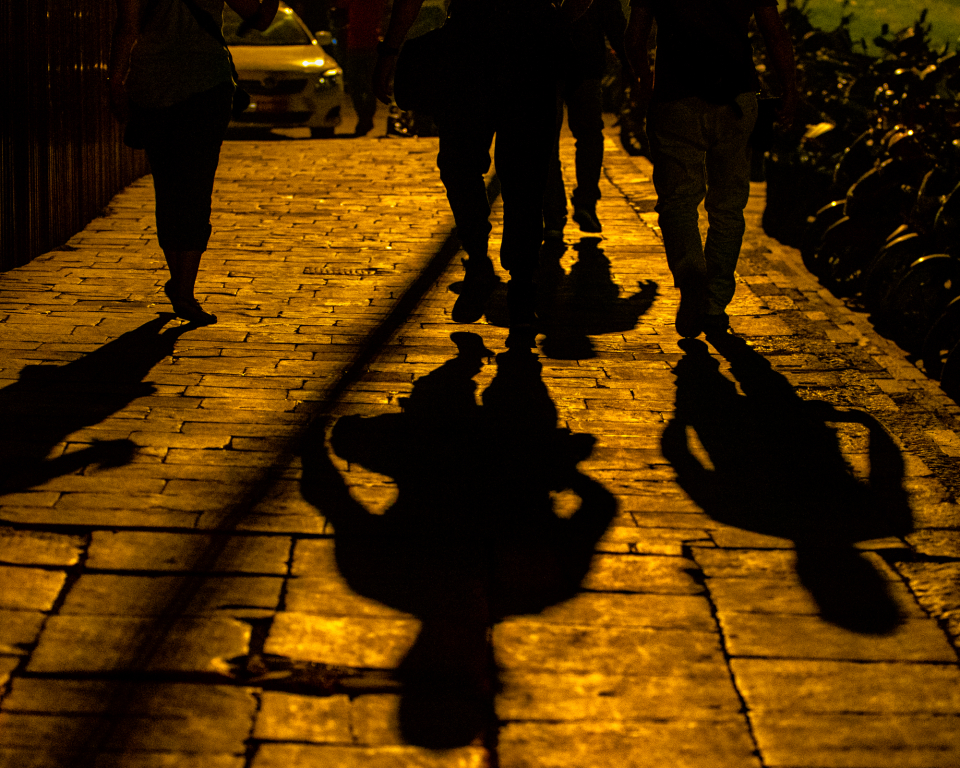If Buddhism is a calming cup of chamomile tea, Hinduism is a triple-shot pumpkin spice latte with sweet vanilla whipped cream foam, mocha drizzle and a dusting of cinnamon powder. Hyperbole? Perhaps, but the juxtaposition of a morning spent watching and photographing pilgrims and penitents quietly circumambulating the Buddhist Boudhanath stupa and an evening being jostled by the Hindu crowds gathered for the fire-light-and-music spectacle that is Pashupati Aarti is both revealing of the cultural differences between the religions, and a wonderful introduction to the complexity that is Nepal.
After our morning spent at Boudhanath, the plan was to have a free afternoon and then meet up around 4 to head over to the famed Pashupatinath Temple complex. This area is a sprawling warren of Hindu temples and stupas sitting astride both banks of the Bagmati River, the site of the ever-active Aarya cremation ghats. These ghats are nowhere near as extensive – or busy – as the famed Varanasi ghats in India, but as an integral part of Hindu life – and death – the cremation rites are fascinating to see and photograph.The Pashupatinath area also features the Pashupati Bridda Ashram, which is essentially an old folks home located on the grounds of an ancient temple and is now used to house those elderly people unfortunate enough to not have a family to live with. We are free to wander through the temple area and most of the occupants are happy to pose for the camera. Especially so if you show them their portraits on the LCD screen, which they get a kick out of. It is somewhat of a melancholy place, though clearly many of the tenants have formed bonds with each other.
As always when wandering in new lands and cities there is much to see and photograph. Nepal is a photogenically rich canvas upon which to paint with your camera. Look around and you will see children playing, devotees praying, shoppers bargaining, monkey troops a-roaming, newspapers being read, streets being swept, and – at least in this temple complex – plenty of Sadhus hanging about. From Wikipedia: Sadhu is a religious ascetic, mendicant or any holy person who has renounced the worldly life. They usually wear saffron robes, or a wrap of some sort, or nothing much at all. Often they will paint their face and body, or perhaps cover themselves with cremation ashes. They make great photographic subjects and will ham it up for the camera but be prepared to pay a couple hundred rupees for the pleasure of photographing them. Since they live by donations, alms and begging, I don’t begrudge a dollar or two for a wild portrait.
From an equipment perspective, I capture these kinds of scenes switching between two camera bodies, one mounted with a 24-70mm f2.8 lens and the other with a 70-200mm f2.8 lens. This allows me to quickly switch between portrait work to capturing more environmental images without having to swap lenses between one body. This is most obvious with the two shots of the magenta-and-orange-colored Sadhu. One was shot at 70mm to present his whole body whilst for the second I switched cameras and shot a close-up of his face and hand at 160mm. The elderly lady was also captured with this telephoto zoom lens (88mm) as was the extreme Sadhu close-up (200mm).
Techniques I often use in travel photography include getting low to dramatically present a scene or subject (woman with burning pans), isolate some sort of action (girl with water bottle and tender stoking the fire), and seek out subjects in framing devices (newspaper reader, elderly sitting gentleman).
The main “show” for the evening was to be the Aarti ceremony. In Hinduism, arti is a generalized term for making an offering with light, usually in the form of a candle, butter lamps, and incense burners. In India, in several cities along the Ganges River – considered holy in Hinduism – very public ceremonies are performed called Ganga Aarti. I have seen them a couple of times and they incredibly photogenic as well as hypnotic to watch (see my Varanasi galleries). For the last decade or so the Nepali Hindu community has been putting on their own version of this, though it is a much smaller affair. Smaller might mean more intimate, but in this case, intimacy means that much unmasked humanity was packed into that small space. In fact, so much so that I frankly gave up on trying to get close enough to get any good images. Admittedly, part of this was due to my COVID squeamishness to crowd-in with my fellow humans! Instead, I contented myself with a telephoto capture of a audience-member’s videoing on her mobile phone! To me, that snap says a lot.
I only grabbed one more frame – the walking shadow image above – before heading home unexpectedly two days later. I don’t recommend going to Nepal for a day, but if you do...make it worth your while.
For more images from Kathmandu see: https://www.clayhausphotography.com/kathmandu


